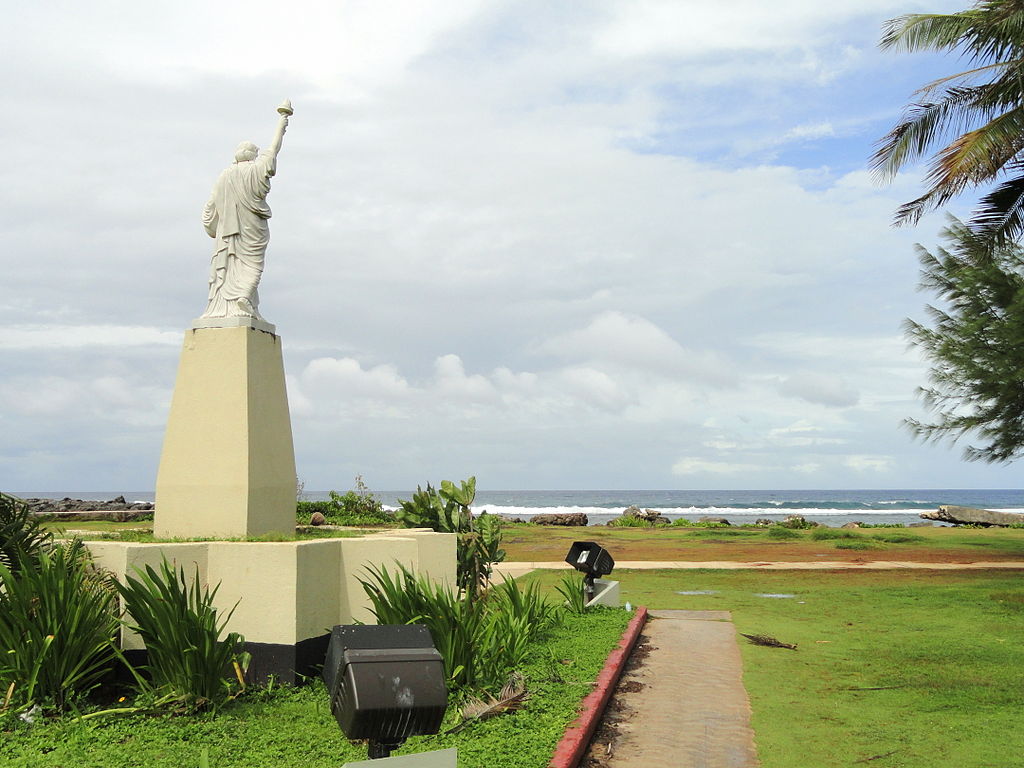An Insider’s Guide to Guam

By Ryodai Matsui
Contributor
18/3/2022
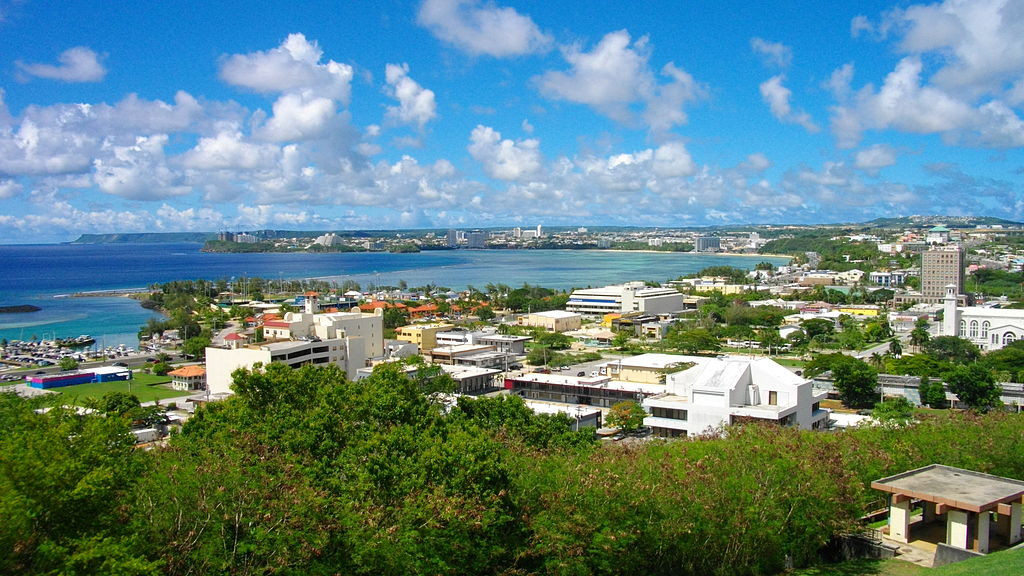
Hagåtña, Guam’s capital, seen from Fort Santa Agueda
Whenever people in the rest of the world talk about Guam, it’s usually for one of two reasons: 1) it’s a popular tropical holiday destination, or 2) it’s home to key US military bases. The pandemic and its concomitant travel restrictions have reduced interest in holidays there, but the rising tensions in the Indo-Pacific have highlighted its strategic importance. Indeed, the US military occupies about a third of the island, with three central command bases. Andersen Air Force Base is located in the northern village of Yigo, which has plateaus that make it an ideal location for airstrips. The adjacent village of Dededo hosts the recently reactivated Marine Corps Base Camp Blaz that, from 2025 onwards, will host Marines relocated from Okinawa and elsewhere. Lastly, the deep waters of Apra Harbor at the southern end of the island are home to Naval Base Guam and the US Pacific Fleet. Despite the THAAD and Iron Dome missile defense systems deployed on the island, Guam will probably be the first target for North Korean or Chinese missiles should the US go to war with them. But what is Guam like beyond resorts and military bases? What is it like to actually live there?
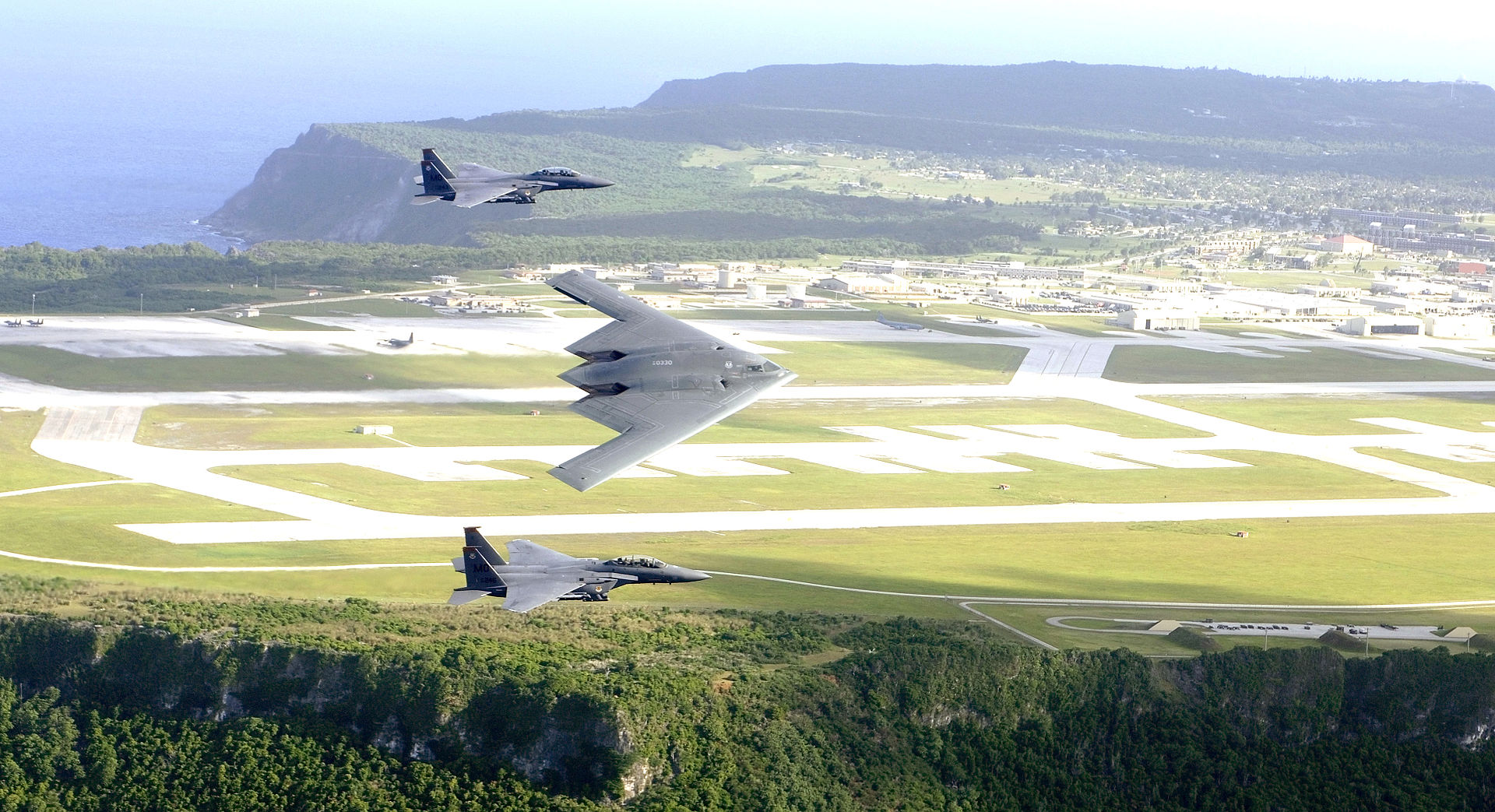
F-15E Strike Eagles and a B-2 Spirit stealth bomber fly over Andersen Air Force Base
Guam, or Guåhan as the indigenous Chamorro people call it — is located 13°N and 144°E in the Pacific Ocean. Surrounded by coral reefs and crystal-blue waters, the island consists of steep cliffs and coastal plains in the north, low lying hills in the center, and rocky mountain ranges in the south. 50 km long and 6-19 km wide, it’s the largest island in the Mariana Island archipelago and in Micronesia.
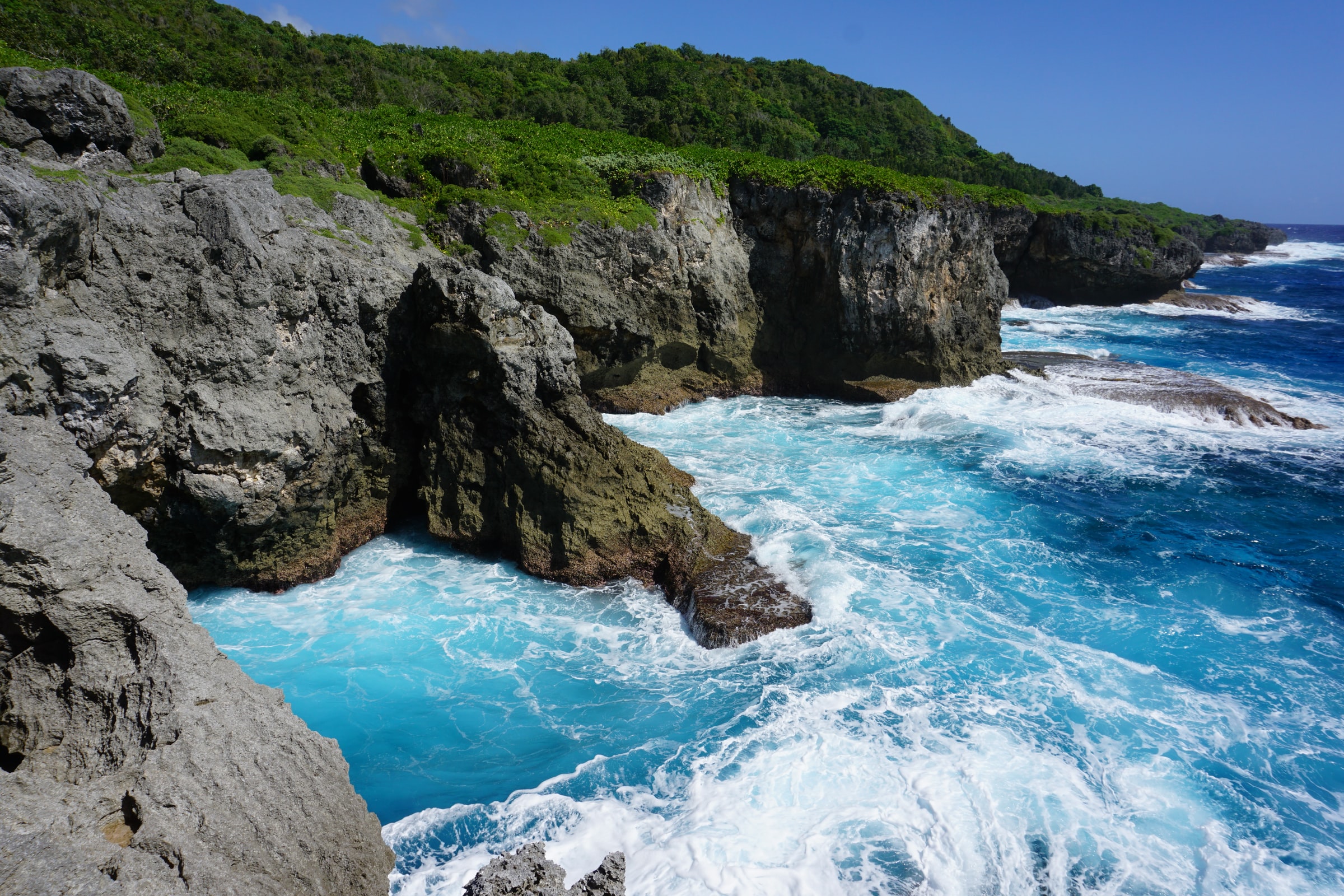
Pagat caves
Because of its strategic location, Guam has long been fought over by great powers, with ownership of the island changing hands over the years. Spain began colonizing Guam in 1668, and held it for the next 230 years. Following the conclusion of the Spanish-American War in 1898, Guam was officially ceded to the United States. In 1941, however, just hours after the attack on Pearl Harbor, Japanese forces defeated the American garrison stationed in Guam and seized control of the island.
By all accounts, life under the Japanese occupation was brutal for the Chamorro population. In addition to being forced to adopt Japanese culture and language, Chamorros endured 32 months of mass killings, rapes, hard labor, and starvation. Because of this, they largely welcomed the Americans when they retook the island in July 1944, bringing back with them freedom, US governance, and SPAM.
SPAM, canned luncheon meat infused with sticky gelatin, is the quintessential element of any hearty breakfast on the island. The most common way of preparing SPAM on Guam is either grilling it to a nice golden brown, or dicing it and tossing it in fried rice. Though it may seem simple, SPAM fried rice is prepared a little differently depending on the restaurant you choose. Should you prefer light and delicate, go to Linda’s or Shirley’s Coffee Shop; more filling, King’s or Denny’s. Grilled SPAM can also be found at American fast-food chains on the island, like McDonald’s, Wendy’s, and KFC.
SPAM, canned luncheon meat infused with sticky gelatin, is the quintessential element of any hearty breakfast on the island.
The best introduction to the island’s fusion cuisine, though, is Guam-style barbecue. As opposed to the sweet and sticky barbecue popularized by southerners on the mainland, Guam barbecue is salty and sour from the standard soy sauce-white vinegar marinade. Proa Restaurant, located in the tourist district of Tumon and in the capital of Hagåtña, specializes in authentic Guam-style barbecue. Meanwhile, the chain Jamaican Grill infuses Jamaican jerk seasoning into the island’s main barbecue marinade, giving the outside of the ribs and chicken a spicy char. The family platter comprises of Chamorro red rice (rice cooked with achiote seeds) and Jamaican rice and peas, topped with barbecued ribs and chicken. Pickled banana peppers provide a kick of heat and helps cut through the richness of the dish.
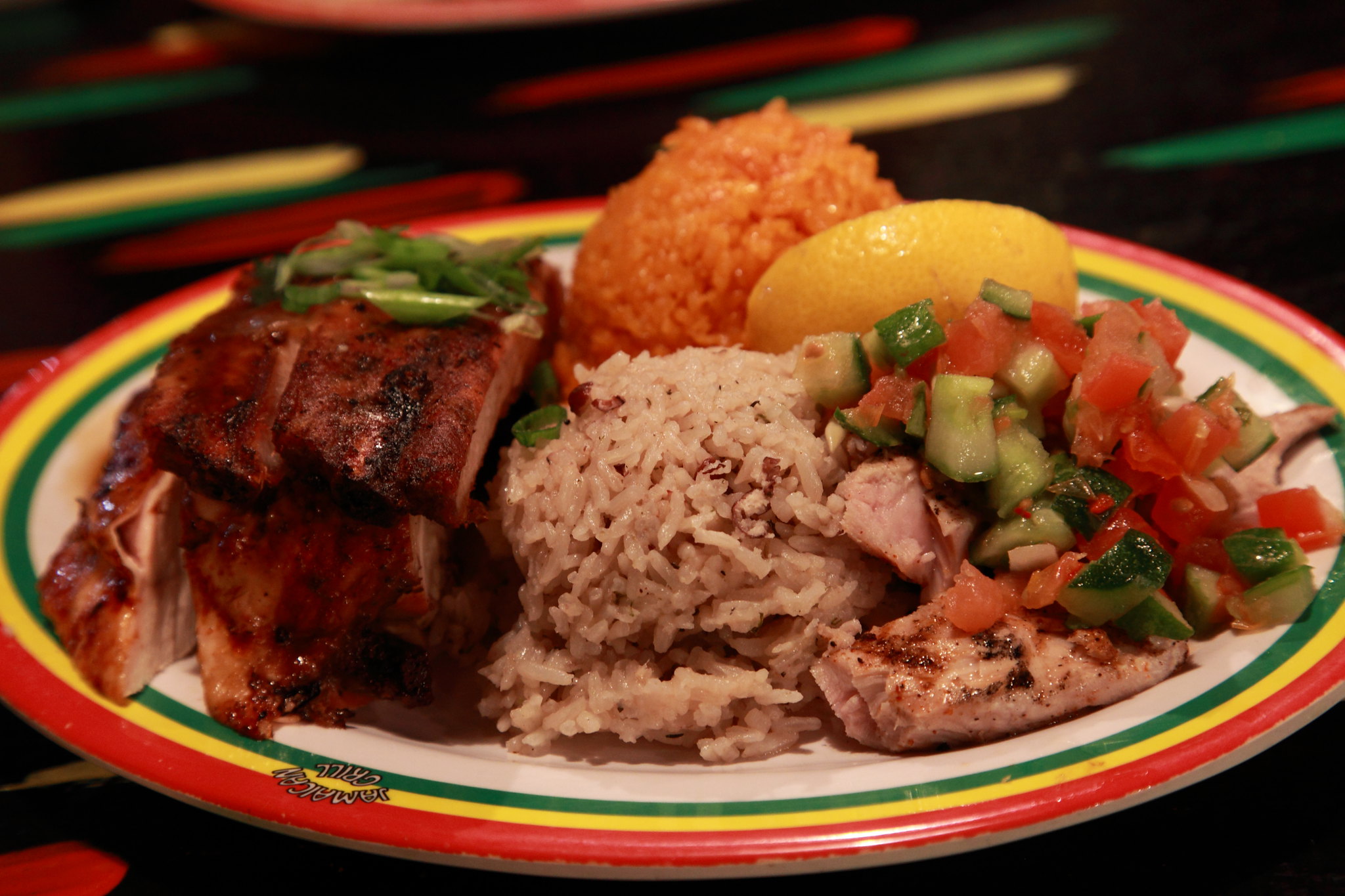
Food at Jamaican Grill (Picture Credit: Ryoku KASINN)
Whilst Proa Restaurant and Jamaican Grill are popular amongst locals, for a true local experience, head over to Harmon Industrial Park, located about 10 minutes’ drive from Tumon. Dirt roads ridden with potholes will take you into Guam’s de facto Koreatown, where you’ll find Korean-owned restaurants and mom-and-pop stores, as well as The Cafeteria. Here, there are no tourists; just locals. And, like any good local joint, The Cafeteria serves local favorites, like beef tinaktak (ground beef cooked with string beans, cherry tomatoes, and coconut milk), kadon pika (spicy chicken stew cooked in coconut milk), chicken estufao (a Chamorro take on Filipino adobo), and fried chicken with denanche, a creamy, spicy condiment made from hot peppers.
The best foods, however, are found at fiestas. Typically held outside under tents at a host’s home, fiestas comprise of at least a dozen different local dishes, including, at larger ones, a whole roast pig. After the host blesses the table, you can start loading your plate with food. At the end of the fiesta, the host will urge you to take a few plates of leftovers — or balutan as it’s called in Guam — which you should graciously accept and enjoy the next day.
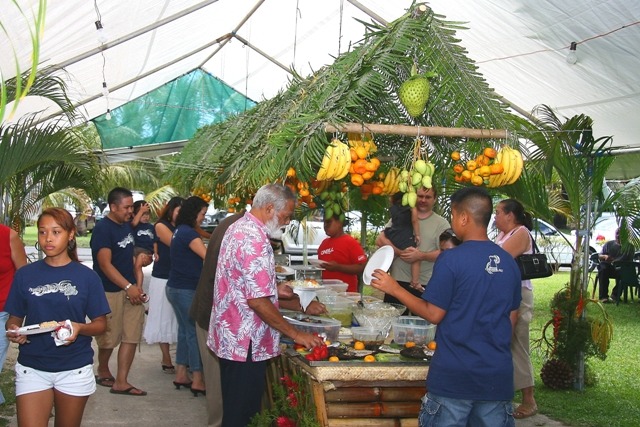
A Guamanian fiesta (Picture Credit: Samuel Flores)
The tradition of fiestas was brought to Guam by the Spanish, who converted the indigenous population to Christianity through means both peaceful and rather violent. Fiestas today are no longer confined to religious holidays, but are held to celebrate any special occasion, like graduations, birthdays, and festivals. To be sure, there are a great many festivals, given the island’s multi-ethnic makeup. Of the roughly 170,000 people on Guam, 37% are Chamorro (who resemble Latinos in complexion), 26% Filipino, 8% Asians coming from mainly Korea and Japan, 7% Caucasian, over 10% Pacific islanders from the Federated States of Micronesia, and around 9% mixed.

Beach in Tumon (Picture Credit: calltheambulance)
Guam is also home to many scenic spots. There’s Two Lovers Point (which provides a superior view of the island’s northern coastline), Fish Eye (a hotspot for local free-divers), and Gun Beach (a beach in the far-right end of Tumon which derives its name from the rusted Japanese naval gun situated there). Drive down Marine Corps Drive (the island’s main highway) and venture into the roads that lead deep into the southern villages, far removed from the typical tourist attractions, and you’ll find a different Guam, one that feels much more laid back, even by the island’s standards. Here you’ll find pristine family-owned beaches and lagoons, waterfalls, and caves. Here the vestiges of an ancient civilization (Spanish colonialism) and war dot the landscape, and time seems to stand still.
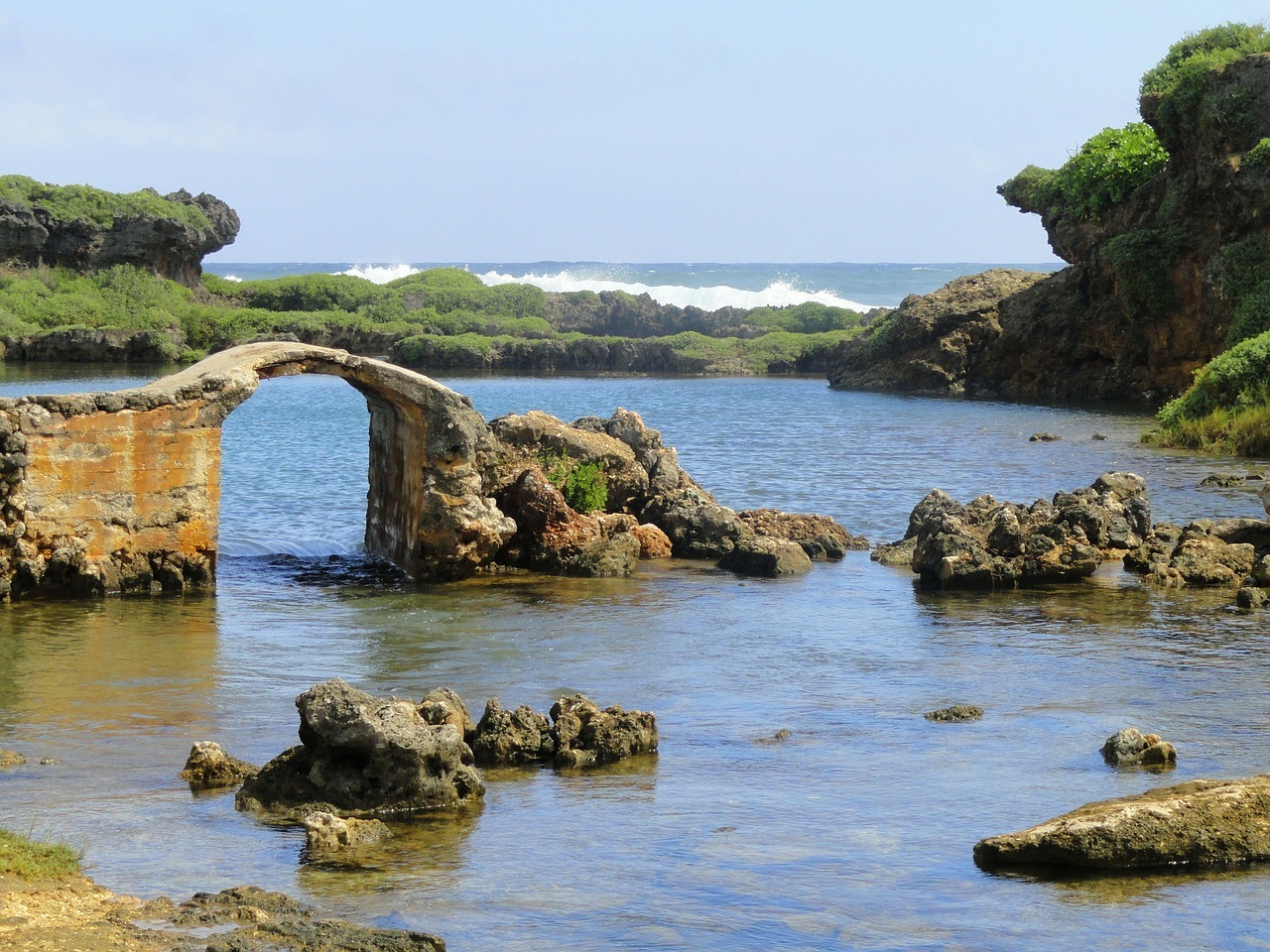
Ruins of Spanish bridge at Injaran Pools
When change happens on Guam, it happens sporadically, the result of its rather torpid political scene. Guam is an unincorporated territory of the US, subject to Congress’ plenary powers. As such, Guam lacks voting representation in Congress, and the vast majority of Guamanians, despite being US citizens, are unable to vote for president. Headed by a governor, the government of Guam comprises 15 senators in the unicameral legislature, and 19 mayors. While, as in the rest of the United States, the main political candidates in Guam are Republicans and Democrats, here their rivalry is less acrimonious. Guamanians base their votes more on individual candidates rather than party affiliation. This is in large part due to the island being a close-knit community, with residents inclined to support candidates close to their family or friendship circles.
Perhaps the most important issue to voters is the local economy. The local economy relies on a steady flow of federal grants that fund health, education, and infrastructure projects. Many Guamanians are enlisted in the military, at a rate higher than in any American state. Much of the local economy is dependent on the military bases, with various bars, restaurants, and nightclubs catering to off-duty servicemen. Local industries like recycling and construction are dependent on global supply chains, and disruptions to them can decimate or wipe out these industries, depressing what is already a small island economy.
Much of the local economy is dependent on the military bases, with various bars, restaurants, and nightclubs catering to off-duty servicemen.
Tourism is, of course, hugely dependent on the world economy, and has been the hardest hit by the pandemic. Just a few years ago, tourism was by far the largest of any local industry, with many resorts, malls, and restaurants catering to tourists. Today, the once-vibrant tourist district of Tumon, lined with luxury boutiques and hotels swarming with Japanese and Korean visitors, is now shuttered and deserted, an unsettling reality for someone like me, who spent most of his childhood there. Tumon is where I have the fondest memories: I remember the quick swims in the ocean during school lunch hours; I remember sneaking into bars on weekends to play billiards; I remember the late-night strolls that always ended with a quick kebab bowl at Dr Kabob.

Tumon (Picture Credit: Daniel Ramirez)
Guam is feasting with family, and people who become like family. Guam is beautiful beaches and the warm, fleeting colors of dusk as the sun begins to disappear beyond the horizon. Guam is the miniature Statue of Liberty in Paseo de Susana Park, overlooking the Hagåtña boat basin, welcoming seafarers home.
Guam, as the slogan goes, is Where America’s Day Begins, and for many immigrant families like mine, it’s where our American Dream first began.
